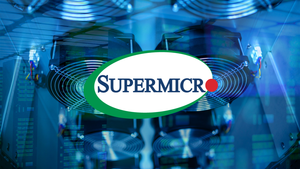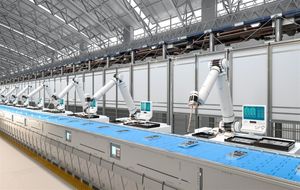
As September 23, 2025, approaches, all eyes are on MillerKnoll (NASDAQ: MLKN), the global leader in office and home furnishings, as the company is widely anticipated to report its latest quarterly earnings. The expected figures of $0.35 per share on revenue of $912.04 million will serve as a crucial barometer for how well the company is adapting to the seismic shifts in the professional landscape, particularly the pervasive move towards hybrid work models. These results are not just about MillerKnoll's immediate financial health; they offer a significant window into the broader office furniture industry's resilience and its ability to innovate in an era defined by flexibility and evolving workspace needs.
The impending earnings report will likely underscore the ongoing tug-of-war between traditional office setups and the burgeoning demand for adaptable, multi-functional spaces that cater to both in-office collaboration and remote productivity. For investors, the focus will extend beyond the raw numbers to the underlying narrative: how MillerKnoll is strategizing to capture market share in a world where the office is no longer a singular, static entity but a dynamic ecosystem.
What Happened (and What's Expected) and Why It Matters
MillerKnoll is expected to announce quarterly earnings of $0.35 per share, with anticipated revenue reaching $912.04 million. These figures, while projections, are keenly watched as they reflect the company's performance in a challenging yet opportunity-rich environment. The context for these anticipated results is the ongoing transformation of work, catalyzed by the pandemic and solidified by a growing preference for hybrid arrangements. Companies are re-evaluating their real estate footprints and investing in furniture solutions that support both focused individual work and collaborative team efforts, whether at home or in a scaled-down office.
The significance of these expected results extends beyond MillerKnoll's balance sheet. As a bellwether for the office furniture sector, the company's performance provides insights into the broader health and direction of office design and furnishing. Key players like Herman Miller and Knoll, now united under the MillerKnoll (NASDAQ: MLKN) banner, have historically set trends in workplace aesthetics and functionality. Their ability to meet or exceed these earnings expectations will signal their success in pivoting their product lines and sales strategies to meet the demands of a workforce that might spend two days in the office, three days at home, or any permutation thereof.
The period leading up to these anticipated earnings has seen a consistent discourse around the "return to office" versus "work from anywhere" debate. This has directly influenced corporate spending on office fit-outs and home office stipends. MillerKnoll, with its diverse portfolio spanning ergonomic chairs, collaborative workstations, and residential-style office pieces, is uniquely positioned to capitalize on both ends of this spectrum. The anticipated results will reveal the extent to which their diversified offerings are resonating with businesses and individual consumers adapting to these new realities.
A Shifting Landscape: Market Winners and Losers
The evolving dynamics of hybrid work create a clear bifurcation of fortunes within the market, with certain companies poised to win big and others facing significant headwinds. If MillerKnoll's (NASDAQ: MLKN) anticipated earnings meet or exceed expectations, it would suggest a successful navigation of this transition, potentially boosting investor confidence in companies that offer adaptable and high-quality office solutions. Manufacturers specializing in modular furniture, ergonomic home office setups, and technology-integrated workspaces are likely to see increased demand. This includes not only direct competitors but also companies providing complementary services such as office space planning, smart building technologies, and even corporate IT solutions that facilitate seamless transitions between work environments.
Conversely, companies heavily reliant on traditional, fixed-layout office furniture or those slow to adapt their product lines to the hybrid model might find themselves struggling. The demand for large, uniform cubicle farms or highly specialized single-purpose office equipment could diminish. This could impact smaller, less agile manufacturers or those with limited R&D budgets to innovate new product categories. Additionally, commercial real estate companies that haven't adapted their offerings to flexible lease terms or co-working spaces might also feel the ripple effects, as less demand for static office environments trickles down.
The "winners" in this scenario are those who embrace flexibility and design for diverse work styles. Beyond furniture manufacturers, this includes technology companies that enable remote collaboration, such as providers of video conferencing software, cloud-based productivity tools, and secure remote access solutions. The "losers" are likely to be those who resist the change, clinging to outdated business models or product portfolios that no longer align with the prevalent working preferences of the modern workforce. MillerKnoll's performance will be an important indicator of whether a legacy player can successfully transform its business to thrive in this new paradigm.
Broader Implications: Reshaping the Future of Work
MillerKnoll's (NASDAQ: MLKN) anticipated financial performance on September 23, 2025, extends far beyond its immediate balance sheet, serving as a critical indicator of broader industry trends and the future of work itself. Should the company report strong results, it would validate the strategic pivot towards hybrid-friendly furniture and design solutions, signaling to the entire industry that investment in adaptability and ergonomic home-office setups is a lucrative path. This would likely accelerate a shift in product development across the board, with competitors intensifying their focus on versatile, space-saving, and technologically integrated furniture.
The ripple effects could also be felt in the commercial real estate sector. A sustained demand for flexible office solutions and a decrease in the need for traditional, large-scale corporate headquarters could lead to a repurposing of existing office buildings into mixed-use developments, co-working spaces, or even residential units. This could have significant implications for property values, urban planning, and the construction industry. Furthermore, regulatory bodies might begin to consider new standards for ergonomic home office setups or tax incentives for companies investing in employee well-being in remote environments.
Historically, major economic or societal shifts have always reshaped the workplace. The industrial revolution led to factories, the information age to cubicles. The current hybrid work revolution is comparable in its transformative potential, demanding a re-imagination of physical and digital workspaces. MillerKnoll's anticipated results, therefore, are not just about furniture sales; they are about understanding how a leading company is responding to a fundamental redefinition of where and how work gets done, setting a precedent for how other industries might adapt to similar large-scale societal changes.
What the Reader Should Pay Attention to Next
Moving forward, investors and industry observers should keenly watch several key areas in the wake of MillerKnoll's (NASDAQ: MLKN) anticipated earnings report. In the short term, the market's immediate reaction to the actual announced figures will be crucial. Beyond the headline numbers, attention should be paid to management's guidance for the upcoming quarters, particularly any insights into future product development, market expansion strategies, and their outlook on the continued evolution of hybrid work. Any strategic partnerships with technology providers or real estate developers aimed at creating integrated work solutions would also be significant.
In the long term, the sustained demand for flexible and ergonomic furniture will be a critical indicator. Readers should monitor trends in corporate office leases, the growth of co-working spaces, and the increasing adoption of "work from anywhere" policies by major corporations. The success of MillerKnoll and its peers will depend on their ability to not only meet current demand but also anticipate future needs, potentially leading to innovations in smart furniture, sustainable materials, and personalized workspace solutions.
Potential scenarios and outcomes could range from a continued boom in the flexible office solutions market, driving sustained growth for companies like MillerKnoll, to a potential plateau if companies begin to consolidate their hybrid strategies or if a significant economic downturn impacts corporate spending. The emergence of new competitors offering innovative solutions at lower price points could also pose a challenge. Ultimately, the ability of MillerKnoll to continuously adapt its product portfolio and go-to-market strategy will determine its long-term success in this dynamic environment.
Conclusion: Adapting to the New Normal
MillerKnoll's (NASDAQ: MLKN) anticipated earnings report on September 23, 2025, serves as a pivotal moment, offering a snapshot of how a leading player in the office furniture industry is navigating the profound shifts brought about by hybrid work. The expected figures of $0.35 per share and $912.04 million in revenue, if achieved, would underscore the company's strategic agility in adapting to a world where the traditional office is being redefined. The key takeaway is that flexibility, adaptability, and a deep understanding of evolving work patterns are no longer just buzzwords but essential drivers of financial performance.
Looking forward, the market will continue to scrutinize how MillerKnoll and its competitors innovate in product design, distribution channels, and service offerings to cater to a diverse clientele ranging from large enterprises to individual remote workers. The lasting impact of this period will likely be a permanent alteration of office design philosophies, favoring modularity, technology integration, and a focus on employee well-being, regardless of their physical location.
Investors should continue to watch for MillerKnoll's strategic responses to these ongoing trends, including any further acquisitions, partnerships, or expansions into new markets. The next few months will be critical in confirming whether the anticipated financial stability can be sustained and how effectively the company can solidify its position as a leader in shaping the future of work environments. The journey of MillerKnoll in this hybrid era is a microcosm of the broader economic and societal adjustments underway, making its performance a significant benchmark for the entire industry.
This content is intended for informational purposes only and is not financial advice





